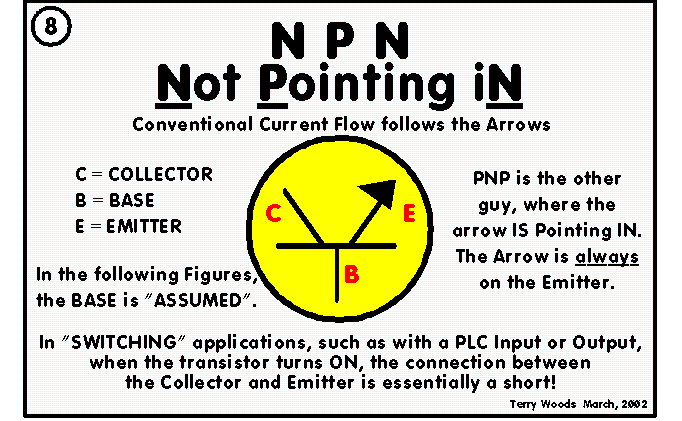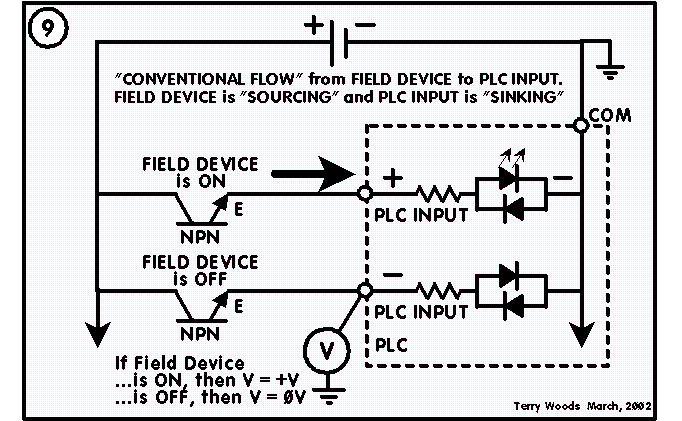I will try again to explain, I am not as elaborate or eloquent as Terry and others but hopefully you will understand.
Sourcing input implies that the plc input "load" HAS A SUPPLY source voltage.
Sinking implies that the plc input "load" has a connection common to supply voltage.
Consider a simple circuit that consists of one digital input connected to a digital output. The circuit needs a voltage source, a ground, and a load. A sourcing digital I/O provides the voltage needed for the circuit. A sinking digital I/O provides the ground needed in the circuit. The digital input provides the load required for the circuit to work.
Figure 1 shows a sinking digital output that is connected to a sourcing digital input. In this circuit, the sourcing digital input provides the voltage and the load. The sinking digital output controls the line by using a transistor to leave the line high (at +V) or to ground the line to 0 V.
Figure 2 shows a sourcing digital output that is connected to a sinking digital input. In this circuit, the sourcing digital output provides the voltage and the sinking digital input provides the load and the ground. The digital output controls the line by using a transistor to leave the line at 0 V or to raise the line to +V.
Because you need both a voltage source and a ground in order to create a complete circuit, you need to have a sourcing input or output connected to a sinking output or input. If you wish to connect a sourcing input to a sourcing output or a sinking input to a sinking output, you will need to add an additional resistor. Lets work on that after you get this.
You did ask WHY and I almost didnt respond to that, I stated in a sense what I thought was more important...ie wiring the device according to manufacturer specifications so take a look at this:
http://www.cascadecontrols.com/Support/Sink_Source.html
As I stated before whether its NPN or PNP its a transistor device being used a switch. I deal with photeyes, proximity sensors, switches etc daily and the most important thing is that the device turns on/off and provides a connection.







